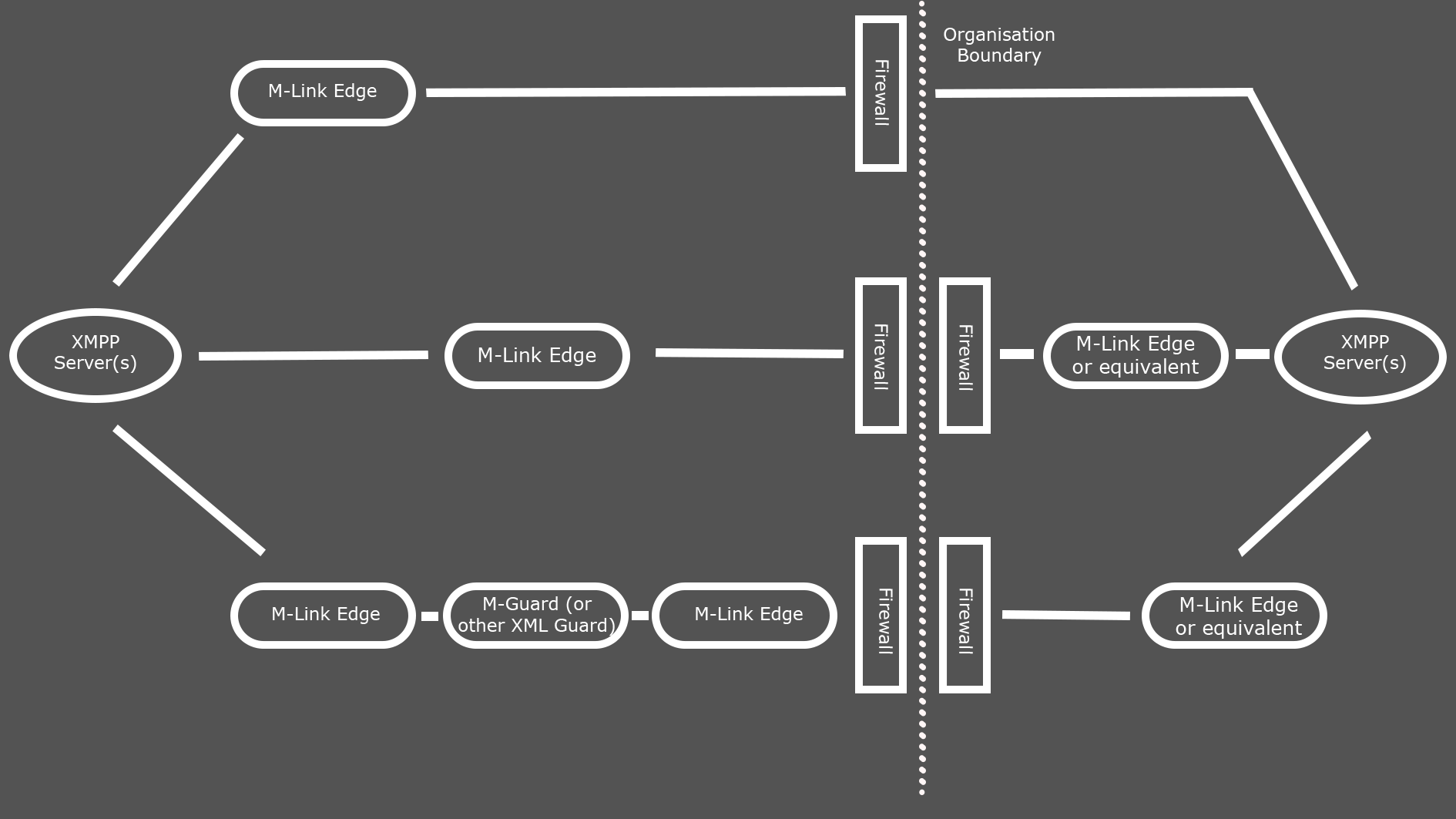
XMPP Boundary Guard
M-Link Edge functions as an XMPP Boundary Guard to protect organisational boundaries and facilitate Cross-Domain services. It can validate, hold, and transform the XMPP messages it processes. This service allows for boundary controls that are completely independent of the primary XMPP service and can work with multiple XMPP servers within an organisation.
Deployment Options
M-Link Edge uses the standard XMPP Server-to-Server protocol to establish connections with XMPP servers, and for connections to High-Assurance Guards like M-Guard, it uses the Guard Content eXchange Protocol (GCXP). It is manageable through a web interface, provides boundary functionality, and does not support direct connections for users or Multi-User Chat rooms.
Firewall with a Single M-Link Edge
This is suitable for organisations in need of XMPP boundary protection since M-Link Edge can work on validating, holding and transforming incoming and outgoing messages. It can also connect with multiple XMPP servers within the organisation, providing one pathway for external traffic.
Pair of M-Link Edges with Firewall
Here, two M-Link Edges are used together, while a firewall separates them. This setup is normally for a Cross-Domain boundary, where one M-Link Edge is placed in each domain. The two edges interconnect through the standard XMPP server-to-server protocol, facilitating strong authentification between servers. This architecture can also incorporate another similar product to M-Link Edge on one side. Each M-Link Edge can be configured based on the specific policy of its domain, enabling independent control over the checks.
Pair of M-Link Edges with XML Guard
The last configuration comprises two M-Link Edges connected to an XML Guard, such as Isode’s M-Guard. This is a great solution when firewall separation does not fulfill security requirements. The XML Guard can ensure that messages are XMPP compliant and adhere to the M-Link Edges. Incorporating an XML Guard between a pair of M-Link Edges is similar to a single M-Link Edge and ensures greater separation security. This can be used in either of the previous configurations, acting as one side of a Cross-Domain space.


